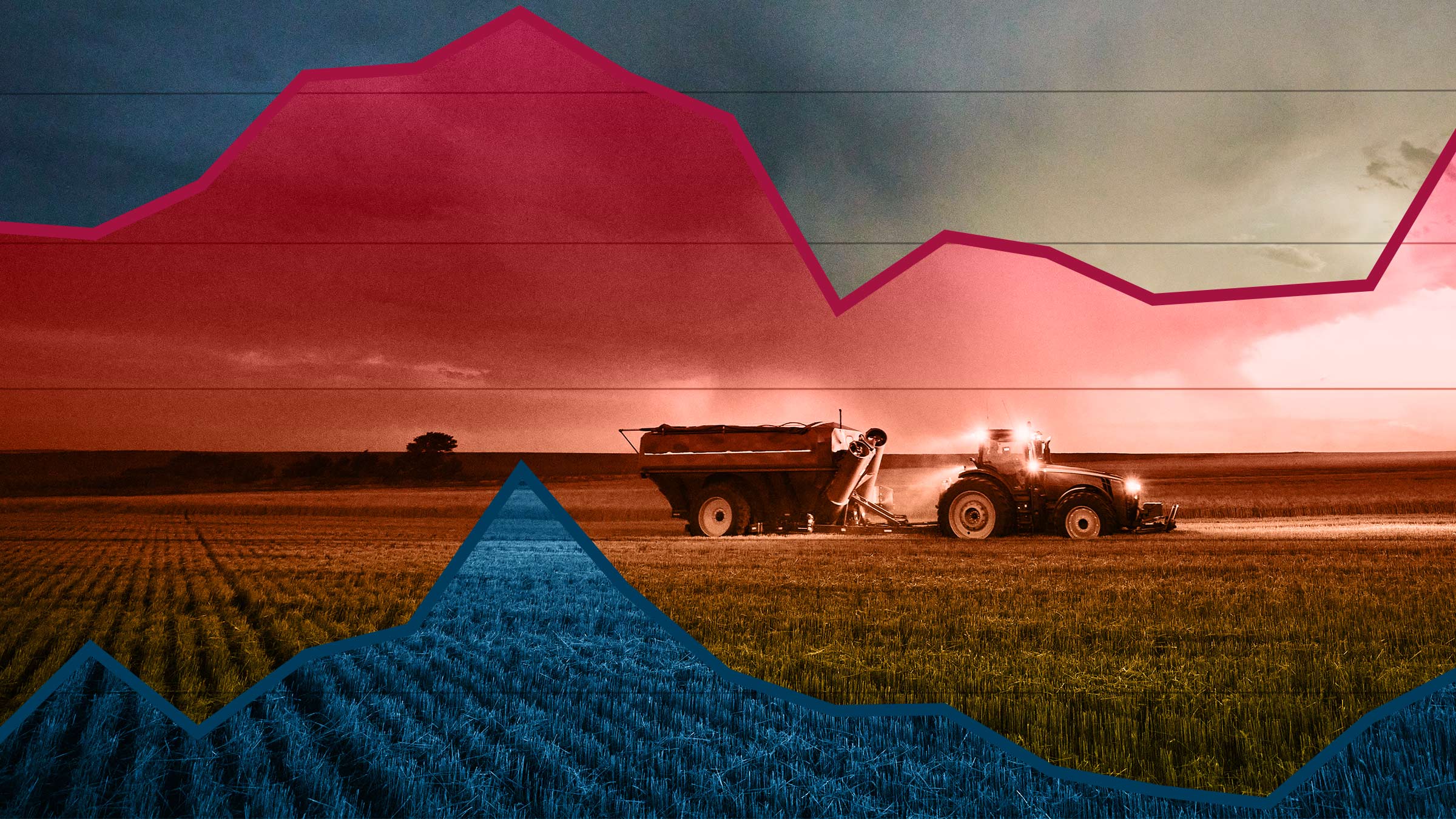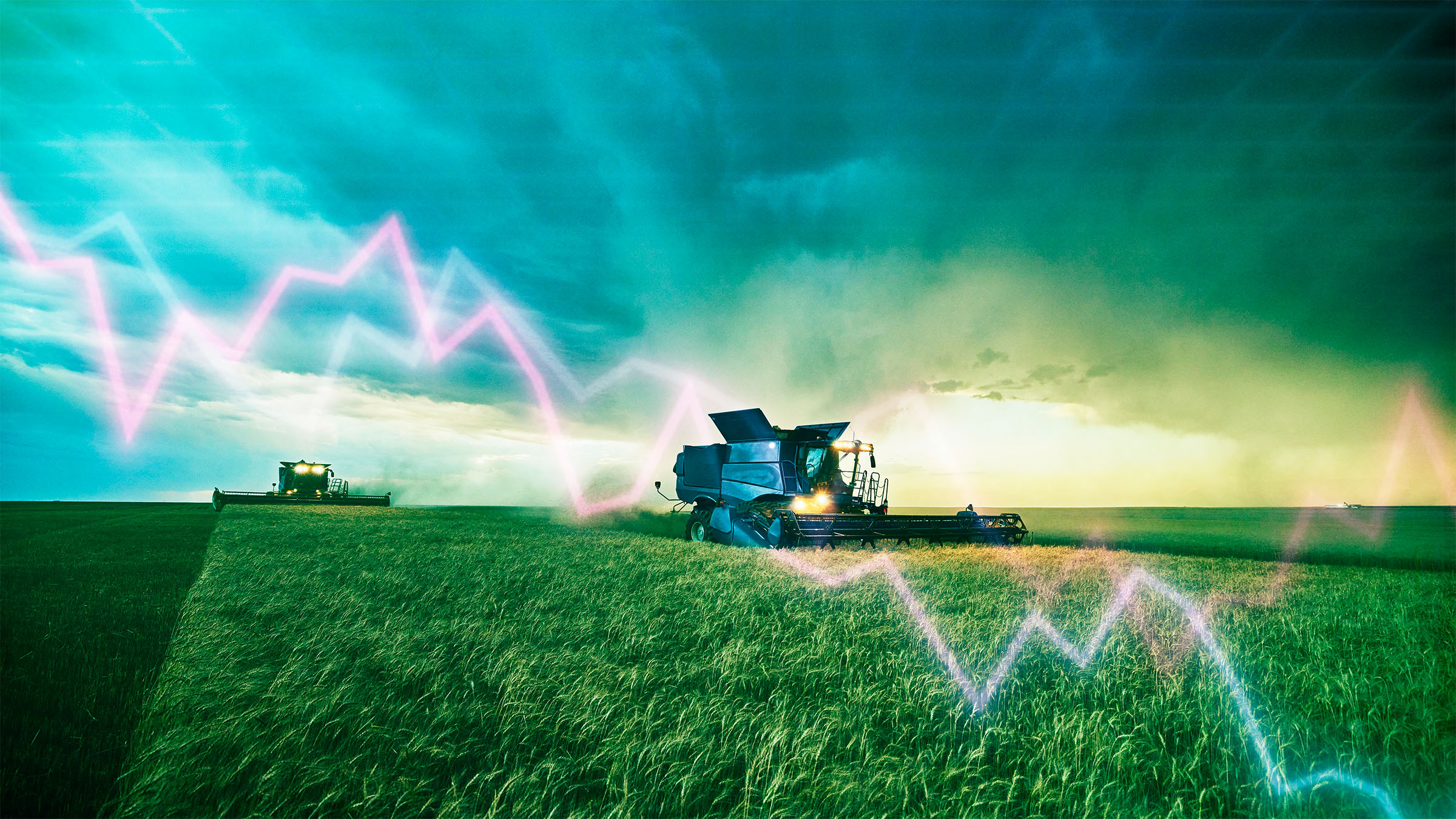Financial risks arise when farm businesses borrow money and create debt obligations. Due to the land- and capital-intensive nature of agriculture, debt obligations are a common way to obtain operating and capital needs. The amount of leverage used varies depending on a farm’s type, strategy, risk tolerance, and profitability. Regardless of leverage levels, farm businesses need to maintain an adequate level of liquidity and working capital to manage day-to-day operations.
What is liquidity and why is it important for agriculture?
Liquidity is a measurement of a producer’s ability to generate sufficient cash flow to pay for financial obligations such as supplies, taxes, and debt payments. Two common liquidity measures include the “current ratio” and “working capital.” The current ratio is expressed as a number and represents current assets—cash items that will normally be sold within a year, such as grain, supplies, or livestock—divided by current liabilities—items to be paid within a year, including debts, accounts payable, contractual obligations, and taxes. The current ratio indicates whether a producer can meet their short-term financial obligations (a vulnerable ratio is less than 1.3, while a strong current ratio is 2.0 or greater).
Working capital is expressed in dollars and is calculated by subtracting current liabilities from current assets. It indicates the sum of cash and liquid funds available to fund day-to-day operations. “Working capital to gross income” measures operating capital relative to the size of each farm—a vulnerable ratio is less than 10 percent, while a strong ratio is 30 percent or greater.
Commodity markets are volatile, which can amplify funding gaps during cash flow shortfalls. Consequently, a strong liquidity position helps producers meet short-term financial challenges by absorbing financial shocks caused by market swings. Measuring and monitoring a farm business’s liquidity measures are also important for managing longer-term financial health. Negative trends in a producer’s liquidity measures can lead to working capital shortfalls and loan repayment weaknesses, and may require producers to restructure debts or liquidate assets to replenish liquidity.
Liquidity trends of the most- and least-profitable crop farmers
Analyzing the long-term financial measures of the most- and least-profitable crop operations throughout the Ninth District can help us understand how liquidity impacts financial resiliency. We can do this by reviewing financial information from the University of Minnesota’s FINBIN database.1 FINBIN includes financial data for thousands of crop farms throughout several states in the district.
Figures 1 and 2 include average liquidity measures for the 20 percent most-profitable and 20 percent least-profitable crop farms in the FINBIN database, based on net farm income. In both charts, the average liquidity measures for both quintiles generally move in unison as the agricultural economy moves through commodity cycles. However, the strength of the measures differs greatly between the two quintiles. In 15 years of data, the average liquidity ratios for the bottom quintile reached a strong position once but were mostly in a vulnerable position throughout the 15 years (Figure 1). Producers in the top quintile, however, had strong levels for all 15 years.
For crop farms, one way to measure and monitor financial positions is by expressing them on a per acre basis. When comparing working capital levels per farmed acre over 15 years, the top quintile of farmers averaged five times the bottom quintile’s level of working capital (Figure 2). From 2015 to 2019, during a weak period for the farm economy that lasted five years, the top quintile maintained working capital at $300 an acre. For the bottom quintile, however, working capital slowly eroded until 2019, when working capital per acre sunk to less than $25, putting these farmers in a very vulnerable liquidity position.
Lowering financial risk by maintaining working capital
Financial risk is elevated when crop farms have a vulnerable liquidity position. A farm with stronger working capital levels can fund day-to-day operating expenses and other short-term obligations without needing to request additional debt capital or restructure existing debts. The appropriate level of working capital for each farm depends on the size of the operation, risk appetite, and economic conditions. During volatile periods, farms should maintain working capital levels to ensure they can purchase inputs needed to operate normally.
Several financial measures allow us to analyze a crop farm’s ability to manage its working capital compared to its operating expenses and debt leverage. Figure 3 displays working capital as a percentage of cash operating expenses for the top and bottom quintiles. After several years of financial stress, the top quintile had a relatively stable ratio (70 percent–80 percent) during the low profit years (2015–2019). For the bottom quintile, however, working capital slowly eroded to less than 5 percent of cash operating expenses in 2019—the lowest ratio in 15 years and a financially vulnerable position.
While not a common financial measure, reviewing a borrower’s interest expense to working capital ratio may show acute financial risks during periods of financial stress. The greater the ratio, the greater the financial risk, especially if interest expense exceeds working capital. In Figure 4, the ratio for the bottom quintile is significantly more volatile because that quintile generally has more debt per acre farmed and less working capital. For the bottom quintile, the greater the duration of financial stress, the more working capital erodes, and repayment capacity significantly weakens. In 2018 and 2019, interest expense exceeded working capital for this quintile, which required operations to build working capital by restructuring debt or selling assets.
Conclusion
The liquidity position of crop farms, especially the least profitable ones, is weakened by prolonged financial stress. Financial risk is exacerbated by prolonged periods of weak cash flow, eventually leading to break-even or negative profits for the bottom quintile of crop farms. Because of the boom-bust nature of agriculture, it is critical for all farm businesses to strengthen liquidity measures during the boom in anticipation of the bust in commodity prices.
FINBIN data show that crop farms in all quintiles have built working capital and strengthened liquidity measures in 2020 and 2021. The strengthened liquidity measures will be important for crop farms in the district because operating expenses throughout the first half of 2022 have been significantly higher than forecasted. If commodity prices remain elevated, the bottom quintile of crop farms will likely be able to absorb some of the elevated operating expenses. However, longer-term increases of operating expenses, coupled with depressed commodity prices, will put stress on all farms—particularly the bottom quintile.
Endnotes
1 The FINBIN database includes financial information for over 1,800 farms throughout Minnesota, Wisconsin, North Dakota, South Dakota, and surrounding states.






